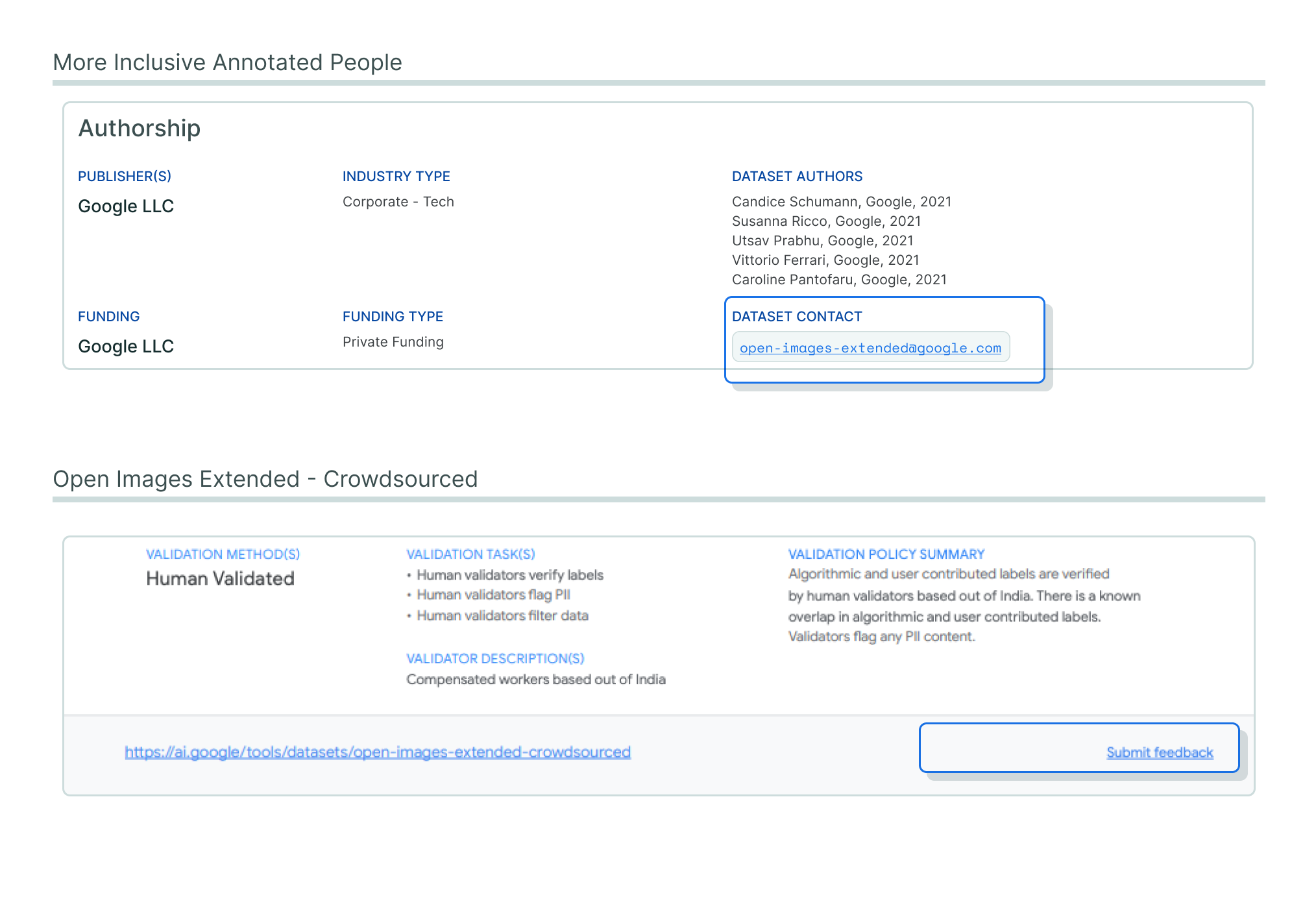New information may become available across the entire project lifecycle, and from disparate and unconventional sources. Integrating new knowledge that becomes available over time is critical follow-up work to keeping your Data Card fresh.
While a comprehensive Data Card can build credibility and trust in the dataset, it also increases the reader’s expectations and raises nuanced questions. So, even a partial explanation needs to remain consistent and accurate.
Consolidate at a cadence.
Identify and consolidate documents that are related to the dataset and contain information multiple times during the process of creating your Data Card. For example, before you begin, in the middle after your first revision, and at the end.
As you find and incorporate new documents, look across your Data Card as a whole to ask the core question: does any of the new information obfuscate, contradict, or clarify existing claims in the Data Card?
Create mechanisms for feedback.
Sometimes, new analyses and information about your dataset will emerge after it has been put into production. Without carefully tracking the impact of feedback mechanisms, finding new knowledge can become difficult.
If you already have downstream partners whom you know will use your dataset, work with them to reflect their findings in your Data Cards and other transparency artifacts. Help them summarize their findings in the voice and tone that you are already using in your Data Card, and where possible, run basic sanity checks for consistency.
